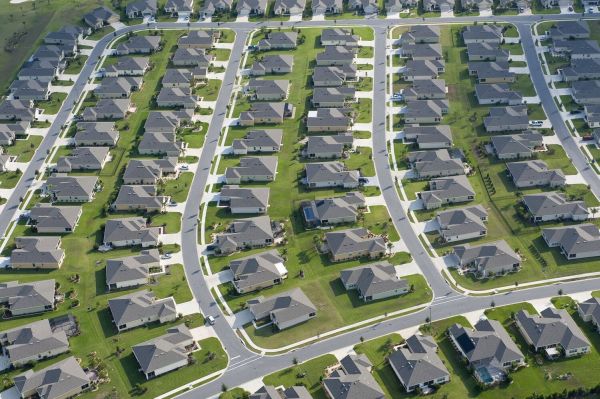Urban density has been blamed for everything from overcrowding to traffic congestion, but is it really the villain? Or are we missing the mark by focusing on density instead of design? A recent post on LinkedIn featured powerful images: one showing the charming, well-designed density of Rothenburg ob der Tauber, Germany, and the others… well, let’s just say it looked like a sad sprawl of asphalt shingles and uninspired architecture.
The message was clear:
We don’t have a density problem. We have a design problem.
And we couldn’t agree more.



What Went Wrong?
Historically, cities like Rothenburg ob der Tauber demonstrate how thoughtful design can create dense, beautiful, and highly livable spaces. Every building serves a purpose, blending seamlessly with its surroundings while preserving individuality and charm. Meanwhile, in modern suburban development, uniform rows of asphalt roofs and boxy designs prioritize cost and speed over sustainability, beauty, or quality.
The problem isn’t how much we’re building—it’s how we’re building it.
A Better Way to Build
At Spengler Industries, we’ve spent decades helping architects and builders overcome the design problems of modern construction. We believe cities should prioritize lasting beauty and sustainability over bland uniformity. Design regulations that encourage high-quality materials, timeless aesthetics, and environmentally responsible solutions could transform cities into vibrant, desirable spaces—without sacrificing density.
In Europe, dense cities are built to last, and building materials reflect that philosophy. Traditional materials like stone, zinc, copper, and terne-coated stainless steel withstand centuries of use, creating neighborhoods that look better with age. Meanwhile, much of what we see today in the U.S. deteriorates in 20 years, requiring constant replacement and maintenance.
What Can Be Done?
- Encourage thoughtful design in city planning: Cities should regulate and incentivize design excellence and the use of sustainable, durable materials—not simply approve cookie-cutter developments that prioritize short-term gains.
- Think beyond asphalt shingles: Metal roofs, such as copper, zinc, and terne-coated stainless steel, offer a maintenance-free solution that lasts for generations, contributing to both beauty and sustainability.
- Restore and rebuild with longevity in mind: Historical restorations teach us that good design is timeless, and Spengler Industries specializes in restoring iconic buildings with materials designed to last forever.
Design for Density and Longevity
It’s time for us to stop treating design as an afterthought. The best urban spaces are the result of intentional design choices, not just density metrics. With smarter design and better materials, our cities can be beautiful, enduring, and functional.
If you’re an architect or builder looking to elevate your projects, let’s talk about how we can help you design for the future.
Contact us today! 801-462-5264
If you think that red tile pictures looks like Prague and other surrounding towns, you are absolutely right! That whole, shared area there sits on vast clay deposits from which those tiles are made. “Westerwald”. Here’s video about this subject::
https://youtu.be/8VWgA9NLIBA?si=vL_veXZedrlyNFbA
